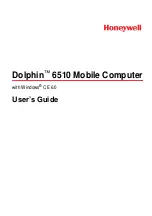
www.ti.com
CapTIvate™ Touch Getting Started Manual
9
Copyright © 2021, Texas Instruments Incorporated
Figure 2-5 Mutual-capacitive detection model
Note: The solid line indicates the actual routing, and the dashed line indicates the non-real routing. Gray
components indicate equivalent capacitance or resistance.
C
RTt
: The parallel capacitance between the Rx and Tx electrodes, which is introduced by a finger touch.
C
RT
: The capacitance between the Rx and Tx electrodes, which is equivalently divided into two capacitances of 2
C
RT
, when touched by a human hand.
The equivalent capacitance between Tx and Rx is shown in Equation 1-4. Sensitivity can be characterized as the
ratio between the capacitance change caused by the touch and the base capacitance, as shown in Equation 1-5.
𝐶
𝑒𝑞𝑢𝑎𝑙
=
4𝐶
𝑅𝑇
2
4𝐶
𝑅𝑇
+ 𝐶
𝑡
||𝐶
ℎ
||𝐶
𝑔
+ 𝐶
𝑅𝑇𝑡
≈
4𝐶
𝑅𝑇
2
4𝐶
𝑅𝑇
+ 𝐶
𝑡
||𝐶
𝑔
+ 𝐶
𝑅𝑇𝑡
(1-4)
𝑆𝑒𝑛𝑠𝑖𝑡𝑖𝑣𝑖𝑡𝑦 =
𝐶
𝑏𝑎𝑠𝑒
− 𝐶
𝑒𝑞𝑢𝑎𝑙
𝐶
𝑏𝑎𝑠𝑒
≈
𝐶
𝑅𝑇
∗ 𝐶
𝑡
||𝐶
𝑔
4𝐶
𝑅𝑇
+ 𝐶
𝑡
||𝐶
𝑔
− 𝐶
𝑅𝑇𝑡
𝐶
𝑅𝑇
(1-5)
For mutual-capacitive touch, the main ways to improve sensitivity are: 1) Reduce the thickness of the cladding
layer; 2) Increase the spacing between Tx and Rx to reduce
𝐶
𝑅𝑇
. But pay attention that the sensitivity will decrease
instead, when the finger cannot cover Tx and Rx at the same time.
Generally speaking, for self-inductance and mutual-inductance capacitance detection, the capacitance change
caused by a finger touch is about 1pF. But the base capacitance of self-inductance (capacitance value before touch)
generally reaches several hundred pF. While for mutual-capacitive, it is about tens of pF. Therefore, the sensitivity
of mutual-capacitive is relatively higher, but it is also more susceptible to noise. From an application point of view,
the self-inductance solution is more widely used due to its simple structure, and the mutual-capacitive solution is
more used for matrix buttons. The comparison between the two schemes is shown in Table 2-1.
Table 2-1 Comparison of Self-capacitive and mutual-capacitive detection
Features
Self-capacitive detection
Mutual-capacitive detection
Difficulty in design and wiring
Simple
Complicated
Affected by the grounded metal shell
Yes
No
Affected by the ungrounded metal shell
No
Yes
Passed CNI test (EMC) level based on the button structure 10Vrms
3Vrms
Support high-density buttons
No
Yes
Waterproof and anti-fog performance
Low
High
Support metal touch
Yes
No
Wheel or slider performance
High resolution
Low resolution
Proximity sensing distance
>10cm
<3-4cm
Support touch screen function
No
Yes










































